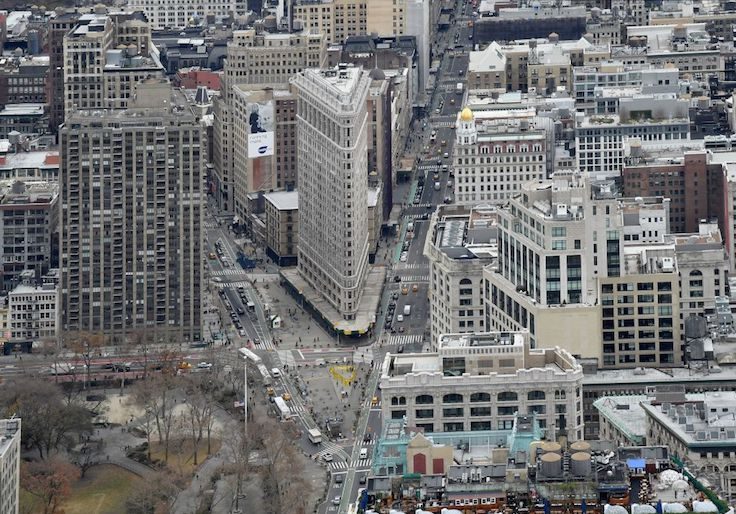A group of New York property owners are taking the city and state to court, claiming that new rent stabilization laws violate the United States Constitution.
The lawsuit, brought by a group calling itself the Community Housing Improvement Program, highlights the often-damaging unintended consequences of rent regulations in the most expensive city in the United States.
Since 1969, New York City has had some form of rent stabilization. The city rent stabilization board meets every year to set limits on how much rent is allowed to increase. In June, the Democrat-controlled New York state legislature passed a sweeping set of changes to statewide rent stabilization laws, expanding them outside of New York City and overhauling many of the associated rules. The landowner group is fighting this set of changes.
"There are 1.2 million rent-stabilized units in New York. That's almost a third of all of the housing units in the five boroughs," said Howard Husock, vice president for research and publications at the NYC-based Manhattan Institute.
The new regulations actually expand the number of stabilized units. Under the prior regime, a previously stabilized apartment that cost $2,700 or more per month would lose its rent-stabilization status when it went on the market, a process that Husock said removed stabilization from several hundred thousand units. But that cap is gone under the new law, just one of dozens of "loopholes" Albany Democrats have closed.
The goal of the old cap was to make rent stabilization benefit less-well-off New Yorkers. But removal simply highlights something that was already true, in Husock's view: "the whole rent regulation regime does not inherently protect people of low and moderate income. All it does is keep prices low."
Rather than helping low-income renters, Husock argues, rent stabilization just makes it cheaper for high-income renters to hoard more of the housing stock. Unable to discriminate on price, landowners looking to ensure rental income discriminate on credit-worthiness, making it even harder for low-income individuals to enter the market. The consequence is that much of the benefit of the system ends up accruing to wealthy renters, whose rent is kept artificially well below what they might otherwise pay.
That was the finding of a recent Wall Street Journal investigation, which concluded, "the biggest beneficiaries of rent regulation in New York aren't low-income tenants across New York City, but more affluent, white residents of Manhattan."
The Journal looked at controlled versus market rents in different NYC communities. They found that in affluent neighborhoods, rent-controlled apartments were $1,000 to $2,000 cheaper than comparable market-rate apartments. Controlled rents in "working-class" neighborhoods, by contrast, were essentially no different than market-rate rents.
Fighting this regime—and the costs they bear because of it—is the goal of the landlords' new lawsuit. Andy Pincus, who is one of the lead lawyers on behalf of the plaintiffs, told the Washington Free Beacon that he and his colleagues think the laws are not just bad, but unconstitutional.
"Our goal," Pincus said, "is to eliminate the current law, which is unconstitutional, and then for New York to adopt constitutional means of accomplishing its goals."
In his telling, there are three constitutional issues at play here. Two have to do with the 5th and 14th Amendment guarantees of due process, firstly with the "rational basis test," which asks if a government act is rationally related to some legitimate state interest, rather than being arbitrary or irrational. The city has offered multiple arguments for its rent stabilization regime: providing housing to lower-income New Yorkers, promoting diversity, and increasing the pool of available housing. But, according to both Husock and Pincus, rent stabilization does not accomplish any of these goals; it actually reduces the supply of housing by making it harder for landlords to expand or refurbish their buildings, and thereby increases prices, excluding individuals from the market.
The second, related due process claim is against the New York City Council. The Council routinely declares New York City to be in a state of "housing emergency," technically defined as a vacancy rate lower than 5 percent. But if the solution to this ongoing emergency is rent stabilization, it is clearly not working—which means, Pincus argues, that there is again no rational basis for the policy.
Lastly, the landlords are making a separate claim under the Fifth Amendment's takings clause, which protects private property holders from eminent domain without due compensation. In Pincus's view, state and city regulations which deny property holders the ability to set rents, evict tenants, or do refurbishment amount to "a physical intrusion on the property that is a per se taking."
Once the suit is served, the respondents will have three weeks to respond. Arguments will take place in the Eastern District of New York. In the meantime, rent stabilization—and a housing shortage—will remain the law of the land.
"New York has the most subsidized and regulated housing, as a percentage of its housing, in the country," Husock noted, "and yet it's always in a housing crisis."
